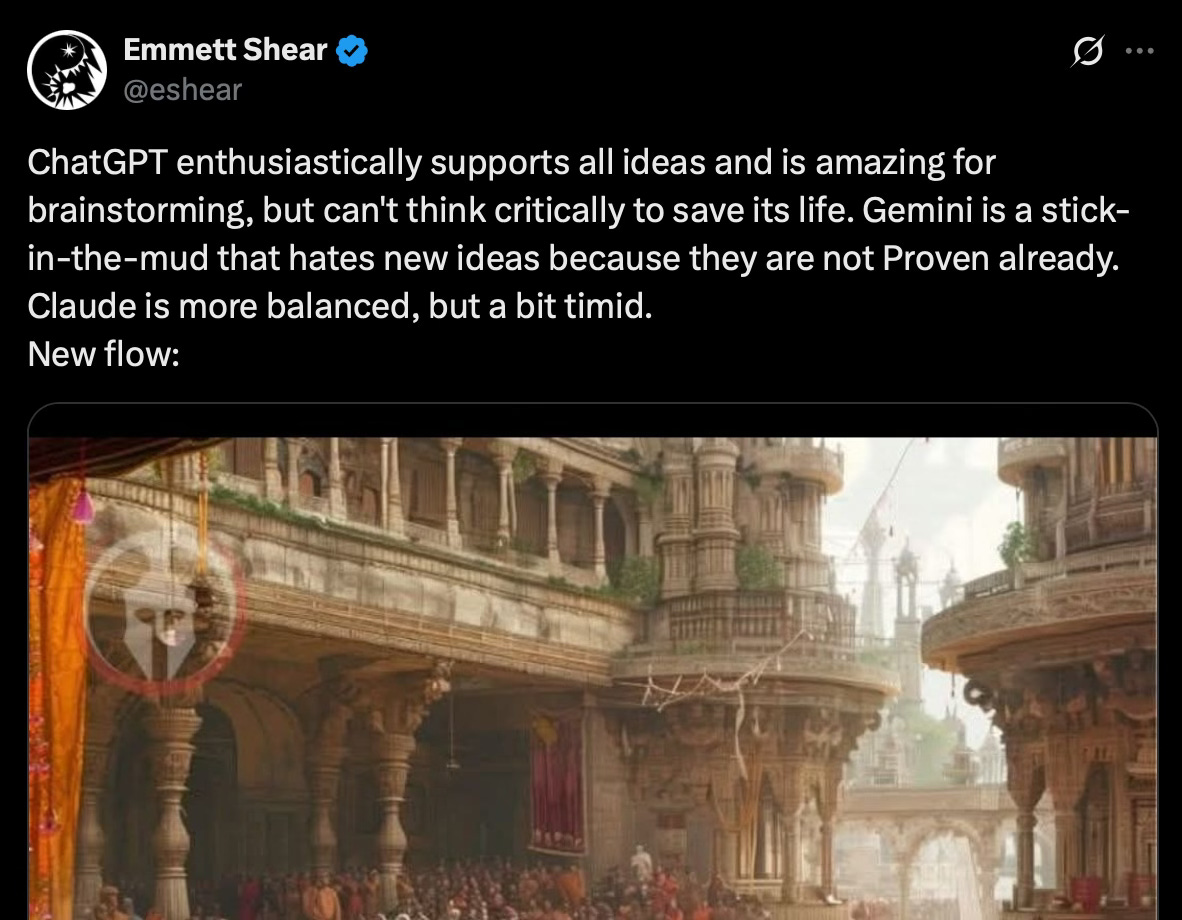Welcome to the era of personality-based tool selection
What happens when we have to consider soft skills in our tech stack as much as in our people selection? Let's talk about the new 'personality hire'
When evaluating tools to adopt in an enterprise, business or product setting, there’s a long list of considerations – with modern LLM-based AI power tools, now there’s a thorny new one to contend with: Personality.
It’s been apparent for a while now that choosing among the various consumers AI chat-based answer engines is at least partially a matter of taste as well as an exercise in comparative capability. People I knew from an editorial background have been generally more willing to lean on Claude for feedback vs. ChatGPT, for instance, and technical-minded folks likewise have their own preferences. That changes with each model iteration, and sometimes within a model generation, as well, as tweaks are made. But the implications are even more profound when you consider what it means to incorporate these tools and their APIs as core elements of a product or products upon which you’re building a business.
Given my new gig, I’m starting to see this up close and personal – but I think Twitch co-founder Emmett Shear may have captured the spirit of this best in a recent tweet, pictured here:
This is something that dramatically changes the way in which tool selection is r should be done. I don’t want to overstate it, however; ‘vibes,’ called that or otherwise, has always been at least part of the equation when you pick what elements make up your stack. But the attitude or persona associated with a particular platform has been more a summary of what the various elements and design choices that make it up convey, in a soft and ambient sense. The UX of Slack vs. the UX of Teams, for instance, is very different, despite similar use cases and end results.
Differences like these are subtle, indirect and likely to have less impact on outputs than you might even expect. Same for a choice like using Google Cloud or AWS. But selecting between comparable technologies like LLMs that have the differing ‘personality’ traits that I think Shear has accurately identified above has a potentially massive impact on what you end up producing as an end product.
Think about those descriptors Shear uses to characterize these competing generative AI products: Basically, they represent a spectrum of appetite for risk, mental malleability and susceptibility to groupthink. All of these are core considerations when making key personnel decisions, particularly in the case of leadership roles.
Models that make up central elements of your technology stack effectively are leadership ‘hires’ in the current approach to AI-powered product building. The non-deterministic nature of their output means that they leave their fingerprint on whatever you’re having them do, to varying levels of visibility and effect based on how far from the customer-facing ‘surface’ of what you’re building they are, and to what extent you’re modifying or mixing the results with outputs from other models and tools.
I think we’re already seeing the model makers lean into the personalities and reputations of their products in their go-to-market strategies for how to sell them, and to who. Anthropic is increasingly interested in the enterprise, and ‘balanced, but timid’ as Shear puts it, is a good way to describe the average ideal enterprise hire, particularly in the middle management bucket.
As with discussions about their capabilities and prowess, one big issue remains that these personalities are also shifting sands, since new model releases seem to bring different characteristics. OpenAI had to specifically and intentionally dial back behavior from its latest model tweaks to make them less cloying and cheerleading, for instance. People, too, change who they are and how they show up over time, and they’re also core to the businesses we build.
I still think it will take a significant shift in mindset to properly adapt to a world in which building out your product and technology architecture also includes making essentially a hiring candidate assessment, alongside a technology capabilities and features evaluation. But that’s yet another exciting facet of just how fundamental the changes resulting from widespread AI adoption will be in terms of how we think about business building, and mostly discrete functional areas like people operations, engineering and product.




